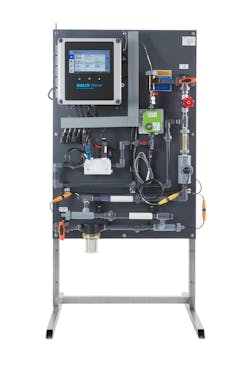Is Automation the Key to Sustainable Microchip Manufacturing?
The manufacturing of the next generation of microchips in the U.S. is underway. Across the country, funding is being doled out to build factories that will produce components required for smartphones, vehicles, electronics, artificial intelligence and much more.
The U.S. government has set aside $280 billion to revamp the country’s semiconductor industry as part of the 2022 CHIPS and Science Act. From this, $39 billion is marked for constructing new manufacturing plants and $11 billion is devoted to semiconductor research. This investment is fueling the construction of new manufacturing plants in Arizona, Pennsylvania, New York, Indiana, Texas, Ohio and Florida.
The demand for semiconductor products may drive the industry towards a $1 trillion dollar milestone by decade’s end, according to McKinsey. Yet, as the market expands, semiconductor fabricators face mounting pressures on the water and energy intensity of their operations. For context, a single smartphone can require more than 3,000 gallons (11,300 liters) of water to produce.
Semiconductor fabricators rely on multiple water sources across their operations. They rely on ultrapure water to maintain the integrity of delicate circuits on semiconductor wafers. They need to manage utility and wastewater applications to heat and cool facility operations. Cooling towers, chillers and boilers require programs to minimize corrosion, scaling potential and other risks to operational efficiency, while wastewater streams require products to remove metals, fluoride and other potential contaminants.
When taken together, the complexity of semiconductor water systems requires specialized treatment and continuous monitoring to maintain production.
The connection between water and energy adds further complexity. Water must be moved, heated, cooled and treated during the manufacturing process, which consumes energy and generates greenhouse gas emissions. Using water inefficiently can translate to increased energy consumption, which exacerbates the challenge.
Automation technologies can help semiconductor fabricators navigate complex water and energy requirements by supporting sustainability and reliable performance in tandem.
Automating smart water management
Smart water management is an approach that relies on digitally enabled monitoring and measurement to help minimize water use while maintaining performance and product quality. This approach can help semiconductor fabricators maintain a pulse on water and energy use so they can make progress on sustainability and business goals at the same time.
Nalco Water, an Ecolab company, uses this approach to support industry customers. In one example, the company worked alongside NXP Semiconductor, a major fabricator of micro-electromechanical systems, microcontrollers, radio frequency transceivers and amplifiers. NXP Semiconductor deployed 3D Trasar technology, along with specialized chemistry treatments, to save 7.2 million gallons (27.2 million liters) of water and reduce wastewater discharge by 8.5 million gallons (32.1 million liters) in a single year. When combined with other productivity improvements and cost savings, the company delivered a total annual value of nearly $115,000.
3D Trasar employs a variety of technologies to monitor and automate operations and are customized for each facility they are installed in. For example, a system may make use of fluorometers to measure fluorescent particles that are added to water operations to measure corrosion, scaling or a variety of other factors. These readings would trigger the release of chemistries into the water to maintain purity or other attributes. Other sensors could include conductivity probes, turbidity sensors, (ORP) oxidation reduction probes and many more. This information is sent to touchscreen interfaces and smart devices that monitor and control the system. It can also be sent to user dashboards via IoT, and to the Ecolab Global Intelligence Center that can monitor operations 24/7 from remote locations.
Nalco Water also helped a manufacturer of data storage equipment use 3D Trasar technology for cooling water and other programs to save an estimated 7 million gallons (26.5 million liters) of water along with 5 million kilowatt hours of energy and 3 thousand tons of CO2 emissions annually, with a total value delivered of more than $450,000 per year.
- Water quality and pH levels,
- flow rates,
- conductivity,
- turbidity, and
- scaling potential and corrosion risks.
About the Author

Leaders relevant to this article:


